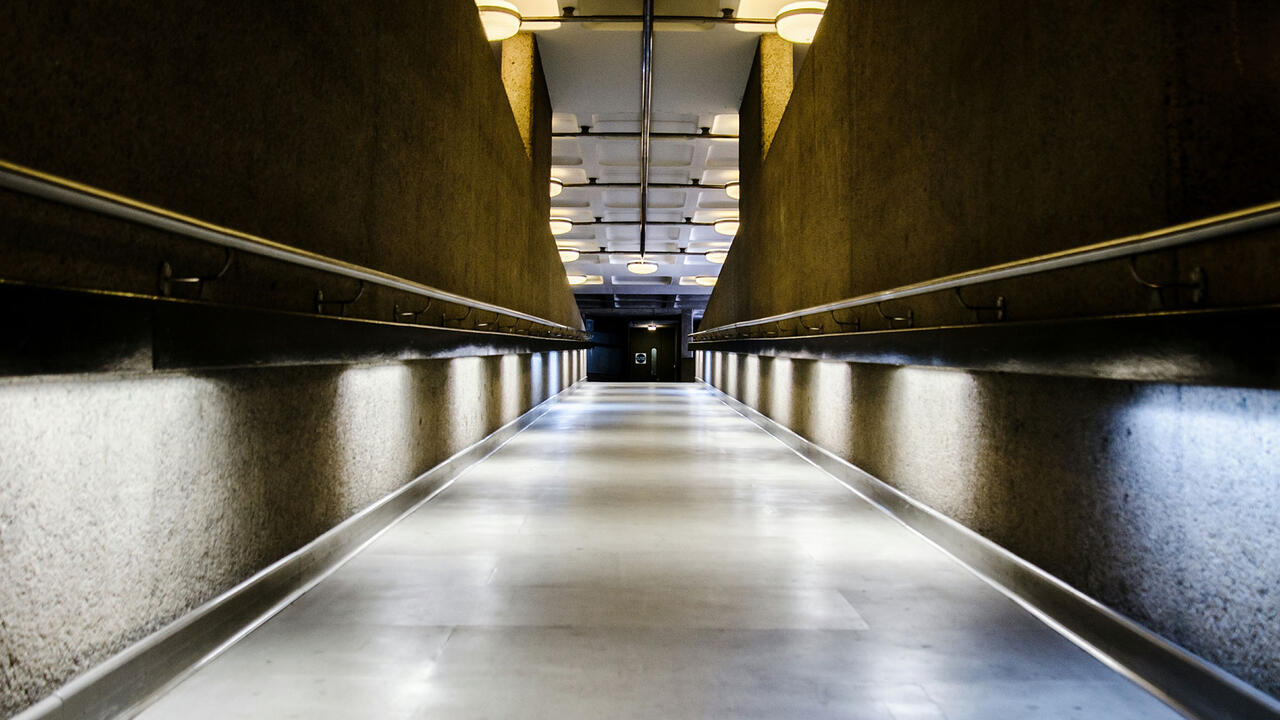Tara Donovan
Institute of Contemporary Art, Boston, USA
Institute of Contemporary Art, Boston, USA

In nearly every room of this ample exhibition of Tara Donovan’s work, a visitor crossed the threshold with a wide-eyed smile, slack-jawed in pleasurable disbelief at its intricate and ingenuously simple illusions. My own face I’m sure proved no exception. The effect common to every installation – wrought in each instance out of workaday materials – is the protean appearance of its objects from afar. From across the gallery, Untitled (Mylar Tape) (2008) evokes not the frank banality of its medium, mentioned in the title, so much as a commingling of nacreous shellfish or a cluster of seaborne invertebrates, huddled and glinting against the gallery walls. Only on closer inspection do they reveal themselves to be mere loops of reflective tape. Nebulous (2002) similarly evinces the organic by virtue of its plain installation: buckles and blossoms of Scotch tape pasted to the gallery floor in a gossamer expanse. It suggests not only the ethereal dispersion of clouds, as its title would imply, but also the membranous cells of some unidentifiable flora or fauna. The craggy stalactites of Bluffs (2006), too, are no mineral accretions but a towering assembly of plastic buttons.
An encounter with the works up close inevitably dispels their mirage-like effects. But it also spurs a reflection on the nature of their artifice, on how multiplicity here almost magically alters appearance, rendering each substance greater than – or at least different from – the sum of its parts. Untitled (Toothpicks, Pins, Glass) (2002) takes this effect to the extreme. One of the large cubes consists of sheets of sky-blue tempered glass, layered in fractured sheets. Another is made of seemingly infinite needles; the last of countless toothpicks, somehow held together in cubic propriety. Each piece’s solid, geometric integrity stands at odds with the fragmented divisibility of its materials. I was reminded of Eva Hesse’s ‘Accession’ pieces (1967–9), and their own dialogue with the fraught legacies of Minimalism’s hermetic surfaces. Although the question of gender seems to resonate less insistently in Donovan’s case, her work’s oblique engagement with the history of craft conjures up important questions in its own right. Donovan’s titles eschew the literary for the more straightforwardly descriptive, even when they conjure up topography and geography. She refuses, unpretentiously, to foreclose on the wide-ranging, elastic metaphorical valences of each work. Somewhere between sculpture and installation, the formal lyricism of Donovan’s work derives from a productive paucity of materials and a remarkable inventiveness of means.
























